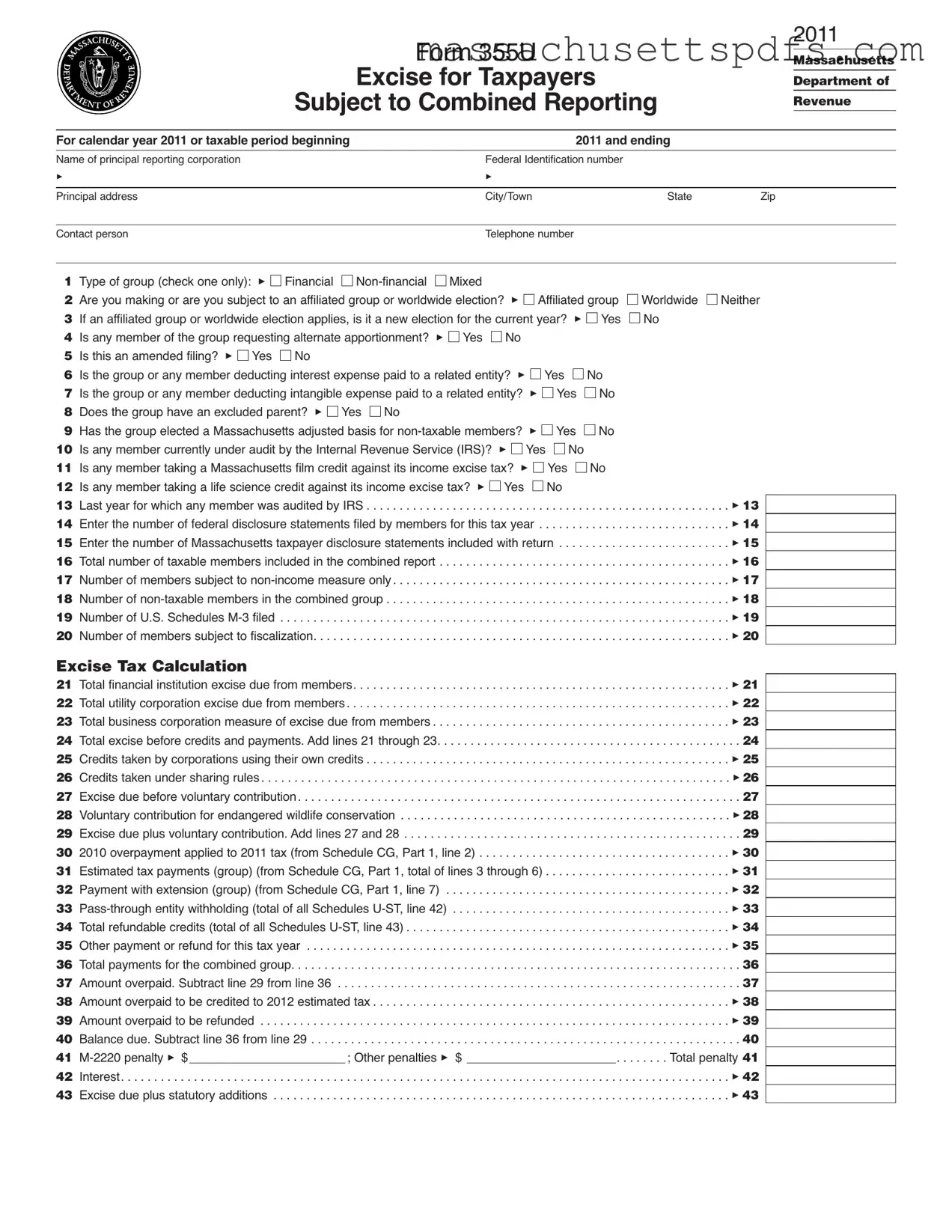Official Massachusetts 355U Template
The Massachusetts 355U form is a tax document required for taxpayers subject to combined reporting in the state. This form is used to report excise tax liabilities for corporations that are part of a combined group. It is essential for accurate compliance with Massachusetts tax regulations.
To ensure proper filing, please fill out the form by clicking the button below.
Launch Editor Here
